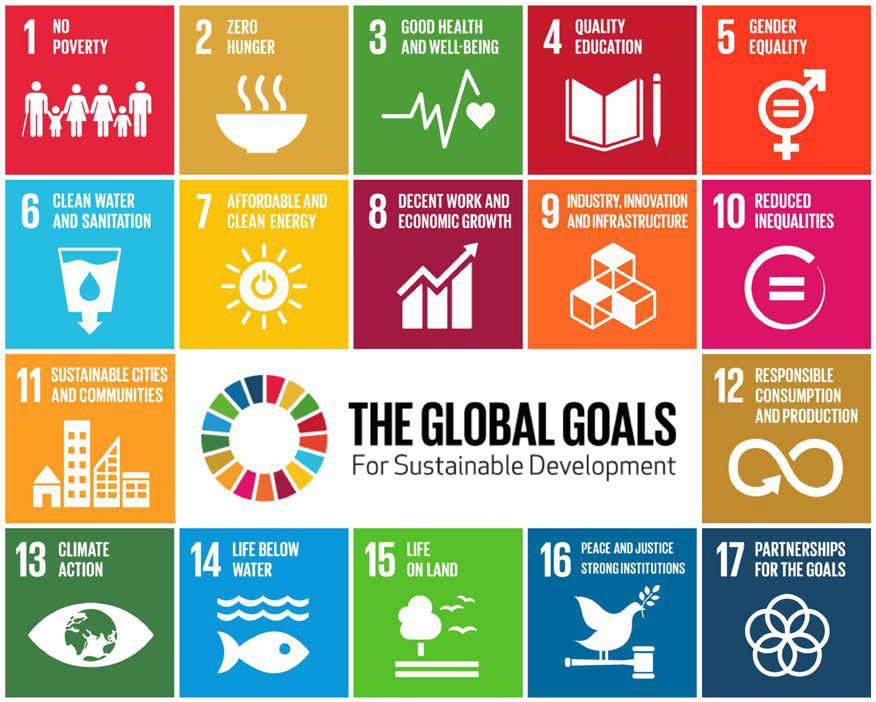Creating a Better World











The Better World Programme is an encompassing programme that is ultimately directed towards young people taking action in their communities.
This can be done via a number of areas - Service to others, service to the environment, community issues and concerns, via small, medium and large scale projects and actions.
A number of opportunities are encompassed within the Better World Framework where you can Plan-Do-Review a community project on the themes of people, peace and planet. Successful completion of project that explore these themes and the SDGs will be awarded an SDG pin! Our Step Up! initiatve will provie you with supports to explore scouting valus and making the world a better place
Creating a Better World is a very wide objective but key to this process is service. Service is directed towards identified issues, so it can be people related, environment related or a wide band of issues within the Sustainable Development Goals.
Scouting and the individual quest to be a Scout includes a commitment to service to others and the planet. So, it is a function of being a Scout that a young person will be encouraged to undertake good deeds and service actions. This presents a duel objective - each Scout is expected to do good deeds and service to others but also it is a collective activity via the team or the group.
All service actions should be directed towards an identified need and Scouting should first and foremost be active in their local communities.
The first step therefore is to explore, experience and discover the needs of your community, the environment and local nature habitats. This exploration is to enable all Scouts
to experience their local community and environment and inspire them to create an action that meets a particular identified need.
Once an action is discovered it is time to plan your action/ project, undertake the project, review it, report/log your success and wear the badge.
This workbook outlines a series of sessions/programmes to enable young people to prepare themselves to identify possible service actions.
The preparation is a series of eye opening interactions to highlight a number of areas - which will prepare and allow scouts and teams to undertake a community survey and create a project/action.
The exercises develop step by step from previous exercises. It starts with a personal realisation, then moves
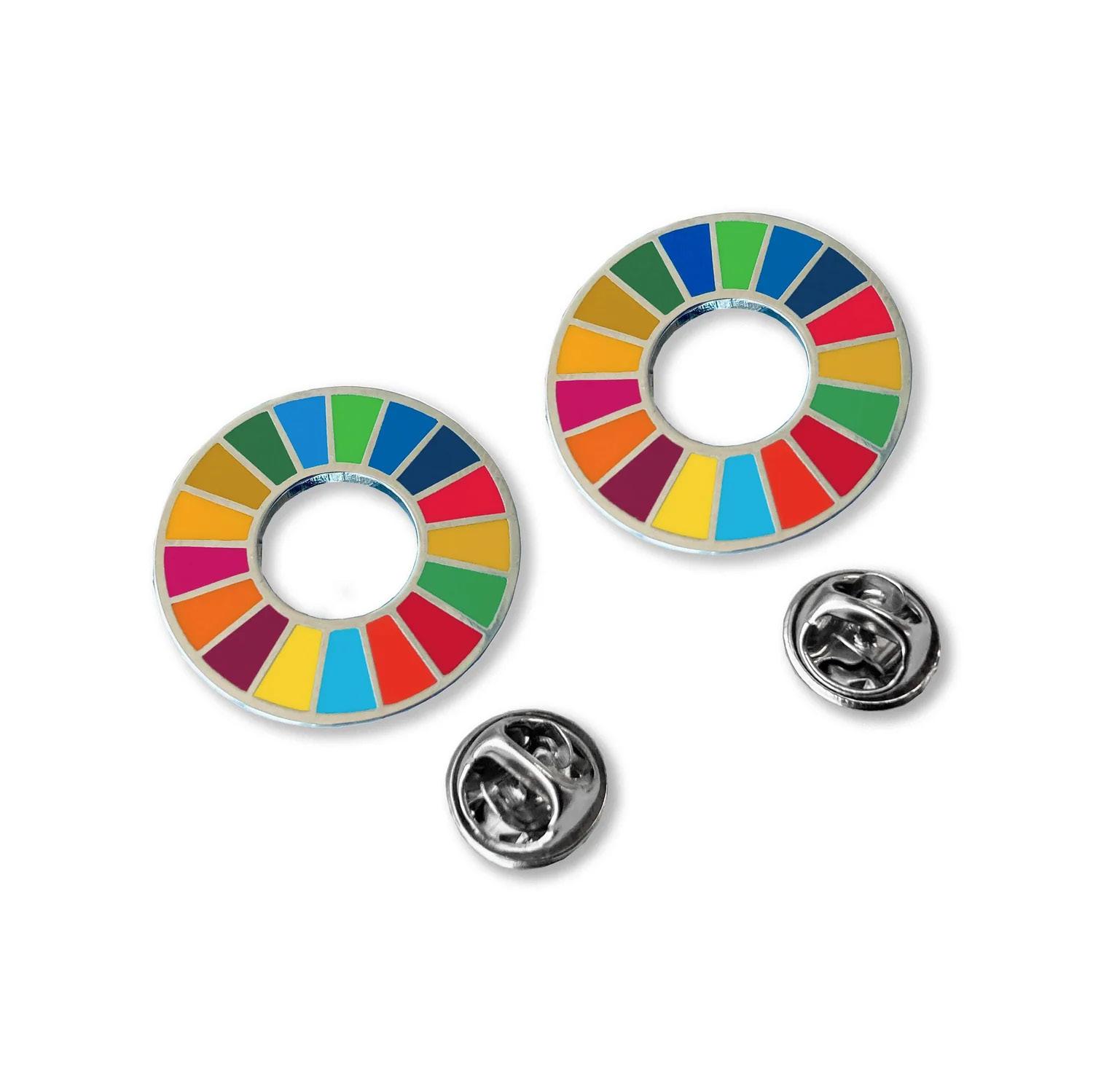
to friendships, trust and team building. Then community and environment are considered.
It will take some time to move through the programme and these sessions can be undertaken in blocks or over a series of interactions. So, it can be a contained programme delivered at a Scout Centre with a facilitator or a series of weekly meetings run by a Scouter team.
The overall objective of these exercises is to move to identifying possible initiatives or projects. The second stage of this programme is a community survey leading to identifying a project. The third stage is undertaking the project. Service to others is a life objective and after the initial action the teams will be keen to do other projects. In which case, a young person will not repeat all the steps but rather return to the community survey and choose another action.

Special thanks to our funder Irish Aid who support the development of SDG programme in Scouting Ireland. This resource/ is funded by Irish Aid at the Department of Foreign Affairs. Irish Aid is the Government’s overseas development programme which supports partners working in some of the world’s poorest countries. Irish Aid also supports global citizenship education in Ireland to encourage learning and public engagement with global issues. Such reports and publications must clearly state that the ideas, opinions and comments therein are entirely the responsibility of its author(s) and do not necessarily represent or reflect DFA policy.

The concept of ‘creating a better world’ is based on the high level ideals presented via the Scout Principles, Scout Promise and Law, Scout Method
Principles
Duty to God, Duty to others, Duty to self
Promise
Serve my community, Help other people Law - Helpful,respect of others, respect for nature
Method
Service and commitment, nature and outdoors, small teams, Promise and Law.
Be prepared
Do a good deed every day & Once a Scout always a Scout
• Small actions can collectively change the world and make a better future for everyone.
• All Scouting is local and community based - therefore all actions should respond to and improve local communities in the first instance.
• Actions in the community heighten the awareness of Scouts and reinforce support for the Group.
• Action based activities based in service improve leadership skills, management skills, life/human skills. building character and team work.
The areas of action are wide and varied and are related to identified needs of a community. There are three steps to action - Discovery and exploration, Agreed action, Review

The good deed ideal is the basis for daily action, personal values, and developing a spirit of helping others (for no reward). This ethic, if encouraged and developed will lead to larger action. Individuals and pairs can be a driving force to lead team based actions.
Team based actions are the preferred method of local action. The bigger team allows the consideration of bigger or prolonged actions. The learning opportunities are also increased and allow for the PLAN, DO, REVIEW methods to be used.
The daily good deed action leads to team based actions. Special interest badges provide ‘badge based’ incentives in community and environment areas. These areas are further explored in Chief Scout and Gaisce requirements.
These progressions build on the service ethic and its place in Scouting life.
The Scouts of the World award is a long-term and time commitment Award that builds on the service journey of a Scout.
The Better World Programme areas are an enabler to focus Scouts attention in their role to ‘create a better world’. They provide a framework and support local programme structures. For those Scouts who wish to wear or gain a badge - badges are available in the Scout Shop. The Scouts of the World Award/badge is the only award provided by World Scouting.
It has a requirement in terms of time and commitment, assessment and award. It is aimed primarily at 15-26 years olds. In seeking to gain this award it is assumed that those taking part have a history of previous service actions throughout their scouting life and the SWA is like a ‘finishing school’ in that regard - a major achievement.
The Better World programmes and networks aim to show the actions of Scouts worldwide. Major global issuesidentified through the UN Sustainable Development Goals are also included. The collective service hour totals shows the real action of Scouts worldwide and is a device to encourage and gain support of other agencies, community bodies and organisations.
The better world website www.betterworld.ie is the portal for logging the hours of service of your group. Log on and upload your stories, pictures and hours of service to others and your community.
Other associations worldwide also have collective action totals. For example the Boy Scouts of America have a Good Turn for America project and their yearly total of service hours is in the region of 20 million hours.

The purpose of this session is to engage participants in thinking about themselves, and sharing information about themselves. The conversations and team gathering will hopefully move the participants to find and discover new friendships.
There are a few stages in this session:-Distribute the personal information sheets Participants move around the play space and make connections with others based on similarities of interests/information.
The facilitator then creates a series of small spacescircles on floors, hula hoops, masking tape squares etc. The facilitator then invites people to move to small spaces based on information provided on personal information sheets.
For example:- people with pets, people who like ice cream, people born in a particular month etc.
The purpose of this exercise is firstly for the participants to rank what they think are their needs and wants. This is done on the handout sheet provided.
The facilitators role is to draw from the information provided to focus participants towards the real needs of people - food, shelter, family, medical etc.
This is useful in the understanding of the real needs of people and the motivation of people across our community.
This exercise will be useful when we address community in a later session. The object of these sessions is to instill an understanding and empathy for others. Everyone is different and we all need to live and work together in our families, groups and community.
Friends are extremely important to the social fabric of life. Young people form friendships easily in play situations. The games within this session explore friendship and the development of trust with a friendship group such as a team.
The first session is related to the watching of two short videos and the reaction to those videos. The first video called ‘Friendship Soup’ explores the ingredients that make up good friendships. The second explores how friends react together and values that build around that friendship.
So when the first video is shown the facilitator/scouter should lead a short discussion exploring the ingredients that have been included in the ‘friendship soup’. Do participants agree, is there anything missing, how important is friendship to everyone.
The second video is then shown which brings friendship to the next level of understanding. How do friends interact, build trust, respect and kindness between them.
Again, when the video is over, the facilitators/Scouter leads a short discussion on the video and issues raised. In essence, participants need to explore their thinking on friendship and how they interact and support their friends.
Within the participant group there will now be a better understanding of themselves, teams and friendship groups. They will know each other a bit better and the following exercises are designed to develop these teams by introducing some trust based games. These are fun based games but have underlying benefits.
Blindfold is centred around listening and communication and passing control to another.
All Aboard is about inclusiveness and making sure everyone is involved and considered.
Helium stick is about collective action, leadership and communication.
Lean - in is centered around dependence and trust. Each participants is depending on each other to complete the task.
Sit down lap circle is a collective trust exercise illustrating the interdependence of everyone within a team or group.
The next two sessions are related to community and moving beyond the connections within the team. In order to undertake a community survey and understand why certain situations may exist teams need to understand the make up of their communities and how everyday situations can affect peoples lives.
Empathy is considered over a number of games and community is considered via a building exercise.
Under pressure is a simple illustration of ‘juggling a series of tasks’. The key point for a facilitator to highlight is that people in their daily lives have to handle many tasks and they have to make choices rather than try to do everything.
Lunch Money is a simple illustration of how deprived families have to live on a tight budget. It also illustrates the
‘have’ and ‘have not’ families that exist in our community. The facilitator can also draw attention to people in developing countries and the differences between first world and developing countries. This is further illustrated in the ‘World of 100’ exercise.
Choices - this games is like a coin flip, the facilitators presents a possible choice and a participant must make an instant choice. There are only two possible choice ‘this or that’.
The facilitator/Scouter or maybe an assistant writes down the choice and places it on a Post - it and sticks it to the wall. After all participants have made their decision, the choices are reviewed. A short discussion on the fact that choices are usually made under pressure and we make our best guess at the time which are determined by many things often related to life, resources, values and time considerations.
Scouts are provided with 'World of 100’ handout and invited to explore it in teams for a short period. The facilitators/scouter should draw out the teams in a short discussion about facts that have amazed or shocked them. The facilitator/scouter should then bring the discussion to ‘how do they think their community numbers would look’
Community recipe - this exercise reflects back to the earlier exercise ‘friendship soup’. In this context participants view the short videos related to community and then discusses it for a short period and creates what they consider to be the key ingredients of the ‘community soup’.
‘The World of 100’ and the ‘Community Recipe’ pave the way to the next exercise.
Town planners invites team to create their ideal town. The town is created with reference to a list of requirementsphysical structures in the main. However, the time spent before this exercise has centered around people and community. The facilitators/scouter needs to bring this knowledge forward to this exercise. Buildings do not make a community - it is comprised of people who live among these building. What configurations aid the building of communities, what spaces are required that foster inclusiveness/friendship and interactions. the needs for balance between housings, play and outdoor space.
The island game is an exercise about status, worth and the perceived skill sets of a community. The key point for facilitators/scouters to watch out for is bias/attitudes/ opinions on different people. Difference is good and should be encouraged. Inclusiveness and diversity are also important and add to the success of a community. Facilitators/scouter can also explore why different people are ranked lower in the selection process and also how friendship and further exploration and conversations with people can provide hidden information and change bias and attitudes.
Overview and introduction with reference to ‘Being a Scout’ and the ‘Better World Programme’ framework.
What am I Needs and Wants
Handouts
Safety pins
chalk/tape/hula hoops
Friendship Soup - Video and exercise.
Friendship - video and exercise
Videos viewed on phones or on a larger screen - wifi required or download before hand.
Session 3 -
Blindfold
All aboard Helium stick
Lean - in Sit on lap circle
Blindfolds and various items for obstacles, duct tape, long bamboo sticks. Chalk or tape for marking area.
Under pressure
Lunch money
Choices
Marbles,post-its, paper and pens. Tape or chalk for marking play areas.

Session 4 - Community
World of 100
Community Recipe -Video and exercise
Town planners
The Island
Handouts, Lego( if using this item), paper and pens
Nature experience workshop
Be prepared workshop
Action at home in your group
Community survey
Project plan
Reviewing
Logging you project on line.


When a young person is attracted to Scouting they are drawn by camping, hiking, adventure, fun and being with friends. They are, in the main, not aware of what it means to be a Scout.
To be a Scout, is much more than doing the activities of Scouting. A young person becomes a Scout when they take the Scout Promise, and agree to abide by the Scout Law. This process of investiture is unique to Scouting, and by becoming a Scout, a young person agrees to travel along a pathway determined by a set of values, ethics, attitudes and outlooks. So being a Scout is a serious undertaking – however it happens in a very natural way and perhaps unbeknown to the young person as they take part in the game and fun of Scouting.
To be a Scout you must:-
Be Prepared
Be a friend to all
Provide service and kindness to others
Honour and be aware of your commitment to the Law and Promise
Be self-sufficient
Exercise and practice self-leadership
Care for nature and the environment
The Scout programme is therefore laced and interwoven with many opportunities for young people to explore these ideals and become proficient in their practice. Overtime a young person will develop many human skills due to their interaction with others in Scouting. Their capabilities and confidence will also grow as they undertake challenges and push themselves beyond limits. Everything that we do in Scouting is interconnected in such a way so that all Scouts move one step forward in their personal development.
Scouts are always prepared – they have the ability to look ahead, consider what needs to be done or what might happen so that they can react quickly to any situation.
This skill and attitude is developed in the team system of each Section. The team is expected to interact and work together at all times. This is learned and improved upon at every meeting and activity so that the team is a solid working unit. Attendance at camps and hikes reinforce this ideal as often weather will impact on the best made plans. Did I place a raincoat in my rucksack?, Do I have a torch in case we are caught out in the dark. Do I have a first aid kit and know how to do first aid? Planning ahead and anticipation of a need or likely event happening is the key element and quality of the ‘Be prepared’ state of mind.
A Scout is friendly to all people. They are naturally friendly and welcome the interaction and discovery of others. The team system places young people in a situation where they must get along, make friendships and work together as a team.
In Scouting we embrace and promote friendship and fellowship in all areas of our activities, ‘A Scout is a friend to all and a brother and sister to every other Scout and Guide’. These virtues are expressed in our Scout Law and Promise. Friendship and fellowship are bonding features of Scouting. Young people join to be with their friends and develop lifelong relationships through Scouting.
It can be difficult to be friendly to all, there will be times when there are disagreement and conflict but a Scout understands that through dialogue and respect of other these obstacles can be overcome.

Two Scout slogans that a Scout will be aware of are – ‘To do a good deed everyday’ and ‘Once a Scout always a Scout’.
To be a Scout therefore is a constant quest for a young person. The daily good deed or kindness to others is deeply connected to the ideal of being a friend to all. If a Scout engages in friendly behaviour and attitude then the notion and act of doing a good deed or kindness for another person is natural. Its effect on both parties is amazing; it creates feeling of happiness, wellbeing, deepens friendships and instills care and respect for other humans. It costs nothing but its effects are tremendous. The commitment in the Scout Law and Promise to ‘help other people’ means that a young person who is a Scout is ‘always on duty’ and it is not only the case when they are participating in the game of Scouting (meetings and activities).
(Honour and be aware of your commitment to the Law and Promise)
To be a Scout a young person takes the Scout Promise and agrees to abide by and live the Scout Law.
These are not just a collection of words spoken on the day of investiture but rather an invitation to live by a code of honour that consists of personal values and ethics.
The Scout Law comprised such virtues as loyalty, honesty, helpfulness, friendliness, kindness, respect for others, and care for and respect for nature and its environments. The practice of the Scout Law and Promise requires commitment, personal integrity, steadfastness and honour by the Scout to fulfil the personal Promise that they make on investiture. This is not an easy undertaking and it is a never-ending journey to hold true to the Promise. However, it is
the journey and the quest that is its most important element, exploring, self-discovery, seeking to do and be your best each contributes in a massive way to the personal development of young people.
The term ‘Scouts Honour’ is now a common phrase used in conversation in all languages and reflects the esteem that a Scouts honour is held. By citing the phrase ‘Scouts Honour’ in an informal way, it means that they are telling the truth and indicate that one has the honourable standards associated with Scouts, and so will stand by a promise or tell the truth.
In order to be a leader a person must be first a self-leader. A Scout therefore seeks to be a self-leader who will direct their own efforts; persisting in situations of adversity and hardship by personally motivating themselves. They are always prepared and ready for action so as to adaptable and flexible to new paths and thinking. Each experience is embraced as an opportunity, an adventure, a potential for learning and advancement of oneself and their team.
Good self -leaders have a confidence build by a wealth of experience in working with and interacting with others. Therefore they can quickly assess risk and devise creative solutions. Underlying their demeanour is a personal ethic and value system that has been developed by experience in real life. Their approach to leadership is one of empowering all team members and seeking to create a team of leaders rather than a team of followers. A self – leader never ‘arrives’ because they are on a constant quest to improve, to gain knowledge and wisdom.
Coupled with the quest to be a self-leader is the ideal of self-sufficiency. This is the ability to acquire knowledge and skill, in such a way, that a Scout can tackle anything with confidence. A Scout can
undertake the basic tasks of life, and does so, without relying on others. A Scout seeks to learn and become proficient in many useful things. This expanded skill set provides confidence to take on the unknown and push their personal limits.
We are all part of nature – it is all around us, it is where we live, it is how we exist. It is a unique space and we need to protect and conserve it so that all things can survive. A Scout understands the importance of nature and is concerned about its wellbeing and its inhabitants of all kinds – wildlife, animals and humans. Being in nature is a unique feature of Scouting – it is a Scouts playground and educational space. It is a place of awe and wonder, for spiritual awakening and reflection. Protecting nature and its associated environments is a key mission of every Scout.

Scouts - creating a better world
To be a Scout is a profound undertaking for a young person. A young person is attracted to Scouting by the activities and friendship but they quickly learn that being a Scout involved much more than just attending all the meeting and activities.
The investiture process invites a young person to take a journey based on a Promise and Law and supported by other symbolic themes, Motto’s and slogans. To become part of a worldwide movement seeking to create a better world all linked by the Promise and Law.
The Promise and Law should not be dismissed as a series of words and aspiration - to a young people making a promise is a real thing and fulfilling that Promise is a serious undertaking.
Being a Scout therefore is a constant quest.
Being a Scout can be encapsulated in the following:-
Be Prepared
A friend to all Scout’s Honour
Self - Leadership
Self - sufficient Service to others
Care of nature”
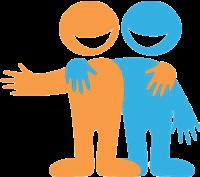
• Welcome to all
• Welcome to a Scout (handshake/ Scout sign)
• Involving everyone
• Inclusive of everyone
• Outreaching
• All creeds
• Dialogue
• Interested in people
• International

• Good Deed/Kindness
• Local service actions
• National concerns
• International concerns
• Character building
• Leadership building
• Empathy
• Project management
• Dialogue
• Human skills

Scout’s Honour
• Truthfulness
• Honesty
• Integrity
• Can and will do it
• Doing your best
• Reliability

• Leave no trace
• Knowledge of nature
• It’s our playground
• Spiritual Place
• Our World
• Circle of life
• Key to survival
• Harmony
• Awe and wonder
• Adventure space
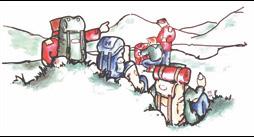
• Learning by doing
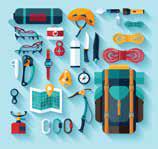
Be Prepared
• Confidence
• Skill sets
• Teamwork
• Readiness
• Planning
• Leadership
• Care of self
• Fitness
• Rescue
• First aid
• Air of confidence

• Commitment Leadership
• Life long learning
• Exploring mind
• Knowing - How to do stuff
• ‘Special interest/proficiency’ badges.
• Adventure Skills
• Life skills
• Self starter
• Adaptability
• Innovator

• Self - leadership
• Personal ethic/values/ code
• Responsibility
• Leadership role
• Teamwork
• Enthusiasm
• Working with others
• Clear focus
• Concern for others
• Air of confidence

In various sections of this resource it is possible to use Lego as the means of expression of ideas. It is particularly useful with younger age sections but also adds a creative twist to older sections.
In order to use Lego as a resource you will need to have a box of Lego for each team. The standard ‘classic’ Lego box of 790 assorted piece is ideal. While expensive (approx.€42 a box) it can be used for many other activities. You will also need some large building boards. Cup of lego - build!!!!
In playing any of the suggestion below keep strict time limits. So for example the first exercise ‘Who am I’ build your avatar is a 5 minute exercise. Observe how team cooperate with pieces exchange, ideas, supporting others and also insuring everyone finishes on time.
Who am I - build ‘me’ and talk about your avatar, what I am about, personal perception.
The story of me - adventures from my lifetime - what I have done- what I dream about.
Fantastic Four - build your hero with super powers.
Your mark/logo/symbol - create it, explain it.
What does ‘Happiness’ look like.
Build to music - play the music build as you feel.

Neighbours - the people in my community.
Town planners - build and create the idea town or community.
Rescue - exploring rescue and people who help other people.
Sustainable living - a new world -what does it look like.
World of 100 - how are resources of the world spread out and impact on people of the world.
Martians - basic communication task - what is this - a pen, what’s a pen, what’s write, what’s words.
Different perspectives - same task, different approaches, talking about it.
Put on a play or show - build the characters, play the parts.
Story Cubes - build elements, create a story - story telling.
Floods/storms/earthquakes - understanding them as natural forces.
What happens next - the good, the bad, the exciting, the mad..
Innovation and inventing - think it, build it, innovate, prototype.
Monument to peace, harmony and happinesswhat does it look like and build it.


Discovery of a self is an exercise comprised of two parts.
Firstly, participants are giving the ‘Who am I’ sheets (two sheet handout) and are requested to fill out the information for display. (set a short time limit)
There are two sheets one that is pinned to the front of the person and the other pinned to their back. ( You need to provide 2 no.safety pins to participants to enable pinning to clothing)
When all participants have completed this part they are then invited to walk around the play space and discover details about other participants and have conversations about the information they discover.
Participants are encouraged to move around a number of people. They should also be encouraged to discover new people and not interact with their friends only.
After a period of time participants stand away from the play area.
The facilitator/Scouter can now mark some spaces on the groundusing masking tape, chalk, or placing hula hoops.
The facilitator/Scouter then calls out some possibilities:-
- everybody who has a pet cat should stand in this circle
- everybody who like art should stand in this circle and carry on randomly inviting participants to stand in unique groups within a circle based on the information on the ‘Who am I’ display sheets.

The aim of this part of the exercise is for the group to discover different likes, loves, interests of the participants and see common interests that exist in the group.
Handouts - page 20 and 21
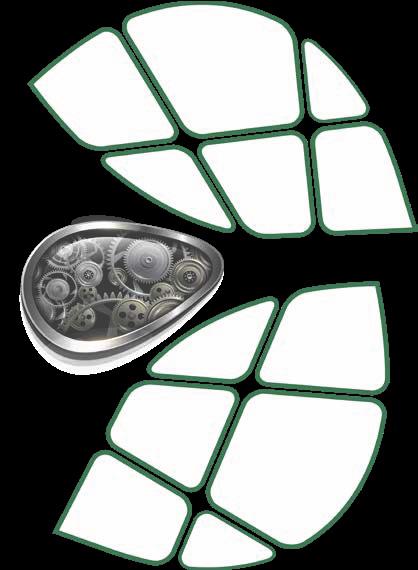

The purpose of this exercise is for Scouts to develop an awareness of their personal identity and understand better their priorities in life.
If Scouts complete the exercise seriously then the likelihood will be that the key essentials of life become the top priorities on the list.
Through this exercise, and others in this programme package, the aim is for Scouts to realise who they are - they are different to others but collectively we belong to various groups - family, friends, community.
Difference is good and natural and we need to be aware of others and the impacts on their lives.
Discuss and review - Scouter/facilitator
What was the collective number 1,2,3 of the group.
What was the collective 16,17,18 items
Draw attention to the key features/essentials of life - shelter, food, family, friends, education, work, medical.

What I need and want
Food and water
Coca-Cola
Wifi
TV
A warm place to stay
School
Denim jeans
Friends
A mobile phone
New clothes
A computer
A job
Freedom to choose what you want
A family
Medical care
Love
Alcohol







Handout page 22
People are good at friendship. We make friends as children naturally, however in adult life this process is not as natural. As adults we are more aware of the ‘like’ and ’dislike’ condition and often the forming of friendships takes longer to establish.
Children and young people form friendships based on play and enjoying themselves whereas adults form friendships based on relationships to each other.
In the main, our friends reflect ourselves; we are drawn to friendship with people who have the same beliefs, attitudes, goals etc.
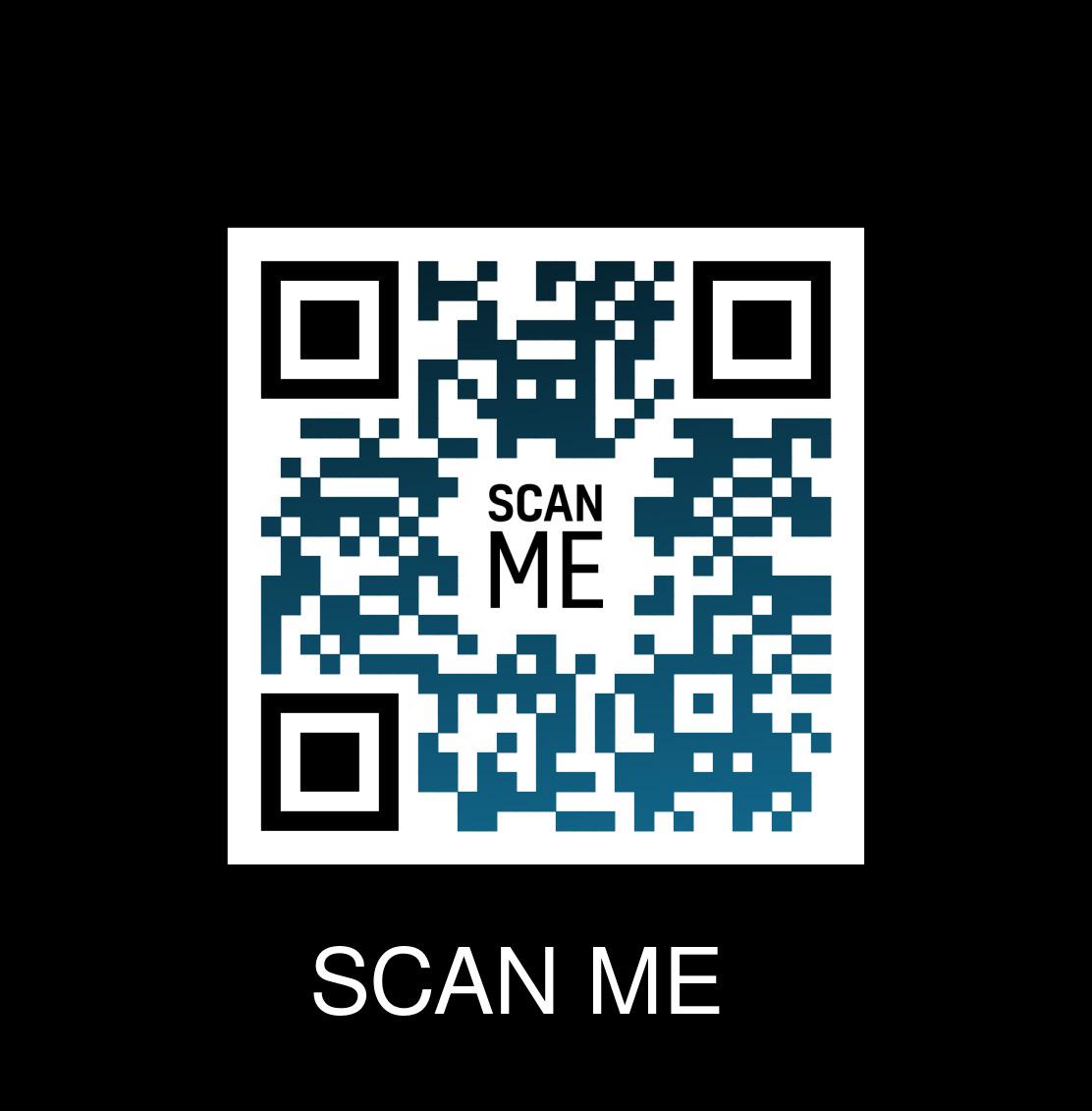


These are one to one relationships, by in large, and can grow to a group based relationship. However, even within a wider group there will always be your best friends that you confide in more than others.
In a Scouting context it is more likely that a Scout will be part of a group-based friendship.
The Scout Method places you within a group, often drawn together by circumstance than by direct friendship formation. These groups work in an atmosphere of friendship and fellowship
The thoughts and wisdoms below therefore will provide ideas that you can bring to the gathering.

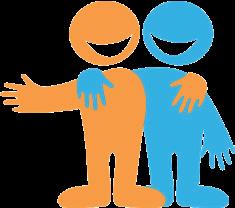
Speak to people - There is nothing as nice as a cheerful word of greeting
Smile at people - It takes 72 muscles to frown and only 14 to smile
Call people by name - The sweetest music to anyone’s ears is the sound of their own name
Be friendly and helpful - If you would have friends, be friendly
Be cordial - Speak and act as if everything you do is a genuine pleasure
Be sincerely interested in people - You can like everyone if you try

Be generous with praise - and be cautious with criticism
Be considerate of the feelings of others - There are three sides to controversy - yours, the other fellows, and the right one.
Be alert and give service - What counts most in life is what we do for others.
Lastly, a good sense of humor, and a a big dose of patience

“There’s no team without trust” - These are the famous words of Paul Santanga, Head of Industry at Google, after a two-yearlong study on successful teams working together..
Individuals cannot just be thrown together and be expected to get along and work together. Team activities and trust building exercises, can increase the sense of camaraderie and friendship within teams. This results in the team needing to work together with good communication and trust to overcome the challenge. Knowing each other personally and learning about each other’s styles, strengths and skills, encourages team members to view their team members as people they can trust and rely upon.
Presented here are a number of games that are particularly good at team building. There are many games and a good source of these games can be found here - all you need to play them is a roll of Duct tape..

Scan the QR code to try out the Team-Building Game: All aboard



This is a great way to develop trust and communication, sometimes called Trust Walks. One person is blindfolded and their partner is sighted. The person takes the other for a walk by holding their hand or arm and talking to them as they go.
Lay a large number of soft objects to be avoided on a grassed area. Amongst them place some soft objects to be retrieved. The in each pair one person is blindfolded and must be guided by the other to retrieve the targets without touching any of the mines. Easiest if the person doing the guiding can touch the other persons hand. Harder if they may only talk to them, harder again if the person guiding is on the edge of the blindfold games area.
The sighted partner is there to provide safety and support for the person ensuring that they follow a safe route.

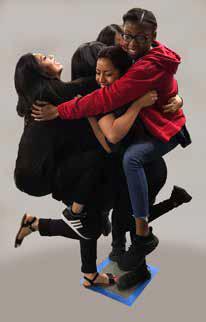
Your team are on a sinking ship - the good news is that a rescue ship is coming the bad news is that the water is infested by hungry sharks. You and your team must stand on the last remaining part of the ship sticking out of the water. If you can stand out of the water for as long as it takes to sing the song ‘Row, row, row your boat’ the sharks will leave the area.
Team must stand up with feet or foot in the squareno piling of bodies or climbing on someones back. No locking of arms or elbows ( in case the team fall over). No standing on other people feet. When time is up dismantle the team rather than let them fall collectively to the ground.
A square of 30cm can hold 6 - 8 people - start at this size and then start reducing it. As it gets smaller teams often respond ‘that it is impossible’, but they then need to be creative and come up with a method to do it successfully..Pick up on this response later.
For teams of between six and twelve, subject to the length of the stick or hoop used for the activity

Form into pairs, with someone of a similar height.
Standing side by side, ask each person to lean sideways towards their partner resting on one another’s shoulders.
Ask each person to shift their own feet away from their partner as far as they feel comfortable.
When ready, explain that each pair should aim to maintain this leaning stance as they walk together to an agreed point.
When ready, swap sides or swap partners.

Equipment:
A long stick,or tube
Instructions:
• The team must support a long stick or tube with each team member using just one finger.
• The stick should be supported in this way at chest height.
• The stick must then be lowered to the ground.
• No fingers must lose contact with the stick.
• The team must return the stick to the starting position if any finger loses contact with the stick.
• The stick must rest on fingers - the stick cannot be grasped or pinched or held in any way.
Notes:
• The tendency is for the stick to rise, hence the name of the exercise. For this reason use a stick for the exercise that is light enough for this effect to occur, given the number of people in the team.
For example a broomstick is too heavy for a team of three people, but would be fine for a team of ten.
• The stick (or any alternative item being lifted) must be rigid and not too heavy to outweigh the initial ‘lift’ tendency of the team size. If it’s not rigid it makes it easy for team members to maintain finger-contact.
• Optionally you can instruct that a finger from each hand is used,which increases the lifting effect and the difficulty of the task. The length of the stick and the number of team members are also factors in this, i.e., two fingers per person requires a longer stick.
• Clarify the point at which the stick is considered ‘lowered to the ground’ - underside of fingers or hands touching the ground is easier to monitor than actually depositing the stick onto the ground, which depending on the ground surface can be very tricky.



A group of people come together, shoulder to shoulder, in a circle around the common good. Everyone turns so that each is watching the back of the person in front of them. Everyone sits down together. Each sits on the lap formed behind them. Each forms a lap for the one in front of them The circle self supports.

How to play: This is really more of a team building activity than a game with winners and losers. There are no teams; just gather all of your participants together and have them stand in a tight circle, shoulder to shoulder. Then in unison, have everyone turn to the right so everyone is facing the back of the person directly in front of them. If necessary, have everyone scoot in slightly so you’re all standing pretty close. Have everyone hold the shoulders of the person in front of them.
Then on the count of three, have everyone sit (on the lap of the person standing behind them). This needs to be done in unison or part of your circle will fall on the ground (which can be fun, too). Practice until you’ve successfully completed the human chair and everyone is sitting and stable on someone else’s lap.


Empathy is a deep appreciation for another's situation and point of view.
Empathy begins with awareness,understanding,feeling, caring, perceiving a similarity of experience, and compassion. But the difficult part of empathy is taking action that truly helps another.
Empathy is present in most people, and certain activities can increase empathy, or at least cooperation, between people. One key to empathy is understanding first in yourself, then in others.
We all know people who are generally difficult to like. How can you have empathy for such people? The answer is that you don't have to like someone to want the best for them. You may feel sad they are like this and you can want them to: become more aware of how they annoy others, take steps to improve themselves, become more responsible, care more for others, and take other steps to become more satisfied and peaceful.
Acting with empathy can be very difficult. Here is an example of a situation where it may be difficult to know what is the right thing to do:
Patrick receives a pay check each Friday. He quickly spends it on tobacco, alcohol, and gambling. By Monday he is getting hungry and asks you to lend him €10 for food. What is the empathic response?
Follow these general steps for acting with empathy:
• Preserve dignity and avoid humiliation.
• Engage in a dialogue to understand his point of view and to determine his specific needs.
Throughout the dialogue keep in mind:
• What he asks for may not be what he needs. Continue the dialogue until you both understand his needs.
• Every person always has needs for autonomy, competency, and relatedness but is unlikely to express these. This may lead to mixed feelings about change.
• Help him to meet his needs to the extent you are willing and able to.
Keep in mind:
• You are responsible for your choices and actions.
• He is responsible for his choices and actions.
• You can change some things but not others.
These games will help your Scouts to understand the issues that might present themselves within a community.
These games are fun to play but also have a serious message. When the game is played it is important that some form of group discussion takes place. This discussion will help to identify what has been learned by playing the game and the issues that needs to be considered.
The content of all the games can be or may need to be adapted to suit your own situation or need.
The collection of games has been compiled from many different countries so adaptation of game content and situations will be required to suit your culture or perspective.




This game may be familiar to you already. It is originally from Zimbabwe. Players sit in a circle. Place a bowl of marbles in the center. The first player takes a marble and tosses it in the air. S/he then tries to pluck as many marbles as s/he can before catching the tossed marbles. The players take turns and when all the marbles have been collected, the person with the most is the winner.
Perhaps the Scouter could explain that having to juggle all these tasks (get marble, toss in the air, pick out other marbles, catch marble) is a little similar to people in developing countries trying to juggle tasks. These are often much harder than marbles however. A woman in Africa may have to walk many miles for water, carry the heavy load back, wash clothes with no protection from bleach, house keep, look after children and prepare the meals.

A burger, a sandwich, a drink. Imagine if you had €4 to cover all your meals for a day, pay your rent, buy fuel for the cooker and all the little things you enjoy each day.
More than a billion people live on less than €2 a day.
It is not hard to see how people suffer under such conditions. The spiral of poverty is such that it is hard to break free.
The task for your team is simple - try to live on €4 a day.
All your meals have to be met.
Allow an amount in the funds for rent - camping fee perhaps
Don’t forget fuel for cooking. Even the matches have a cost.
It will not be easy. Try and do it with only the €4 fund. If you can’t do that then what will you leave out or who will be left out of the cooking pot.
Notice how cheap foodstuffs will be simple and not provide all the vitamins you require. Meat and other foodstuffs providing protein will more than likely be too expensive for your budget.

The Scouters stand at the top of the room with some post-its. Each young person in turn goes up to the Scouters and makes a choice between two things (quickly without too much thought allowed). When a choice has been made the Scouter writes a note and places it on the wall.
It is best to make the choice between two things young people most probably like at the beginning then move on to more life based choices. When the young person picks their choice they go to the side of the choice wall and do not return to the larger group.
This traditional game for Uganda can be used to help the young people understand the choices people have to make.
In the scheme of things deciding between burger or fries is no big deal but it will probably seem unfair to the young person at the time as they are used to the two together. It helps the young person realise that some people have to make these unfair choices on life or death matters everyday.

The world population has now reached 7.5 billion people. To understand the make up of the world population it is imagined in terms of a village of 100 people.
the World were 100 PEOPLE:







Imagine you have been given the task of finding a group of people to move to a remote island and setup a community for the next hundred years. You can only choose ten people to inhabit the island.
Scouter facilitation and review questions
Discuss what were the principal criteria used in deciding who would be chosen to inhabit the island?
How comfortable did Scouts feel about making this kind of decision?
Will the island include a diversity of cultures?
Why were some people chosen over others?
What does this tell us about society’s attitude to different people?

This exercise can be paper based or can be created with lego pieces.
You are a group of Town planners employed by a local county council to design a new town. In designing the town you are limited to the restrictions imposed by the County Council
You must design the Ideal “Newtown” which will agree with our principle of equality of opportunity and freedom to all regardless of wealth, religion, class or politics.
Scouter facilitation and review questions
The purpose of this exercise is centered more around the key principles and how this is managed in creating the layout of the town. Of equal importance is community and how people interact and create a community.
How did the teams deal with the principles expressed by the council.
How did the teams manage the environment and historical elements
How did the team manage the housing placement and distribution.
How does their plan create and encourage community








who has never

I am someone who...
who hates who can’t who loves who has who can’t wait to who can who would rather who wishes who tried to who doesn’t know how to who is thankful for
I can make the world a better place
by:-


Pick one item that you think you need most and put it at the top of a list. Then choose an item that they need least and put it at the bottom of the list. Continue on from top to bottom until the list is complete:








The ten commandments of human relations
Speak to people - There is nothing as nice as a cheerful word of greeting
Smile at people - It takes 72 muscles to frown and only 14 to smile
Call people by name - The sweetest music to anyone’s ears is the sound of their own name
Be friendly and helpful - If you would have friends, be friendly
Be cordial - Speak and act as if everything you do is a genuine pleasure
Be sincerely interested in people - You can like everyone if you try
Be generous with praise - and be cautious with criticism
Be considerate of the feelings of others - There are three sides to controversy - yours, the other fellows, and the right one.
Be alert and give service - What counts most in life is what we do for others.
Lastly, a good sense of humour, and a a big dose of patience







The world population has now reached 7.5 billion people. To understand the make up of the world population it is imagined in terms of a village of 100 people. If the World were 100 PEOPLE: 50 would be










In this session we will explore Community. The first part of this session involves watching two short videos. Scan the QR codes with your phone to upload the videos from Youtube.
With reference to the ‘Friendship Soup’ video and exercise you did earlier what do you now think are the ingredients of a ‘Community Soup’.
A Community Soup is the collections of ingredients that are required to create a working, interactive community in which people want to live happily, and peacefully together.
Think about it yourself for a short while, then as a team and finally create your recipe
No. of parts/ helpings of Ingredients
You are a group of Town planners employed by a local county council to design a new town. In designing the town you are limited to the restrictions imposed by the County Council
You must design the Ideal “Newtown” which will agree with our principle of equality of opportunity and freedom to all regardless of wealth, religion, class or politics.
Housing Types:
2 x Blocks of Luxury apartments (20 units)
1 x Council Housing Estate (200 families)
1 x Private owed Housing Estate (500 families)
1 x Traveller site (10 families)
2 x Blocks of council flats (50 families)
1 x Luxury Bungalow Estate (50 units)
1 x Block of old folks flats (30 units)
Compulsory:
Train station
Bus station
Chemical Factory
Dump Cemetery
Community Resources:
Roman Catholic Church
Church of Ireland Church
Post Office
Shopping Centre
Fish and Chip Shop
Hairdresser
Health Clinic
Doctors Surgery




Imagine you have been given the task of finding a group of people to move to a remote island and setup a community for the next hundred years. You can only choose ten people to inhabit the island.

Decide who you would choose and why from the following list? A 20 year old male secretary A 37 year old experienced Scout leader A member of the Travelling community An ex-politician A farmer A female police officer A young apprentice female carpenter A disabled school teacher A musician A gay doctor A grandfather A film star A religious leader An Indian nurse A Chinese cook A science student A pregnant teenager A retired self-made millionaire A social worker A 19 year old model
Discuss what were the principal criteria used in deciding who would be chosen t o inhabit the island? How comfortable did Scouts feel about making this kind of decision? Will the island include a diversity of cultures? Why were some people chosen over others? What does this tell us about society’s attitude to different people?

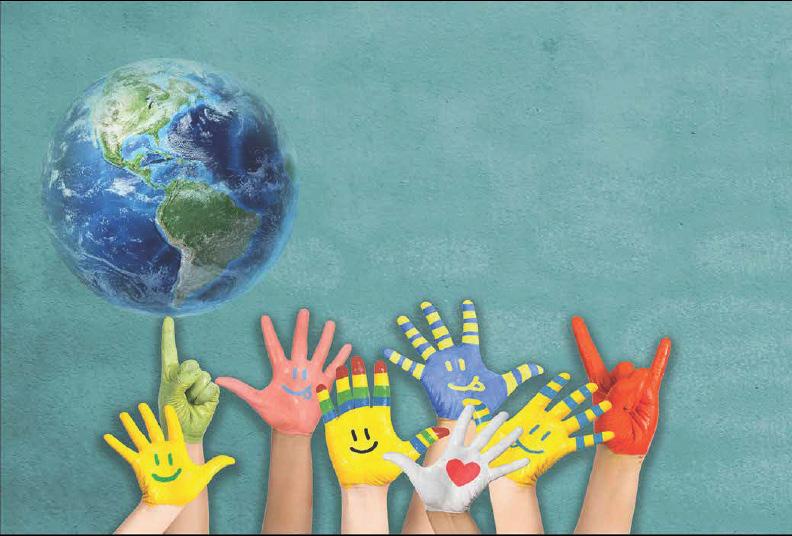






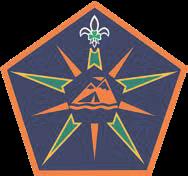
Good Deed every day ideal
Special Interest Badges - community
Special Interest Badges - environment

Messengers of Peace
World Scout Environment Badge
Scouts of the World Award Issue driven prolonged action/project
Good Deed every day ideal - instant, state of mind, personal value, being a Scout
Special Interest Badges - responsive, can be team based, agreed steps/challenges. Service and action possible in Community and Environment areas
Chief Scout Award(s) requirement to do additional special interest badges in community and environment in accordance with time allotted. Beaver & Cub approx.16 hours, Bronze 26 hours,Silver 52 hours, Gold 104 hours.
Better World
Projects that benefit your community outside of scouting can be based on the themes of people, peace and planet
open to every Scout, follows good deed concept and project based actions by teams and groups - peace is a wide concept - more about harmony. Scouts log service projects and service hours.
open to all scouts - based on environment action. Concept - Discovery and exploration (5 areas), Team Action and Award. (can also log hours)
Venture and Rover (15-26) - large time commitment, a type of finishing school in service. 21 hours in discover, 80 hours in service action, assessment and review

